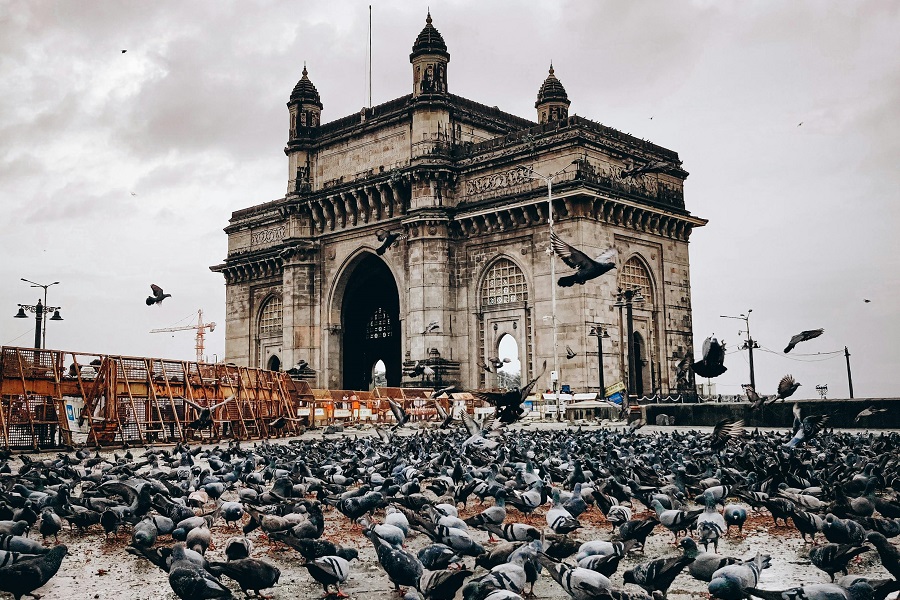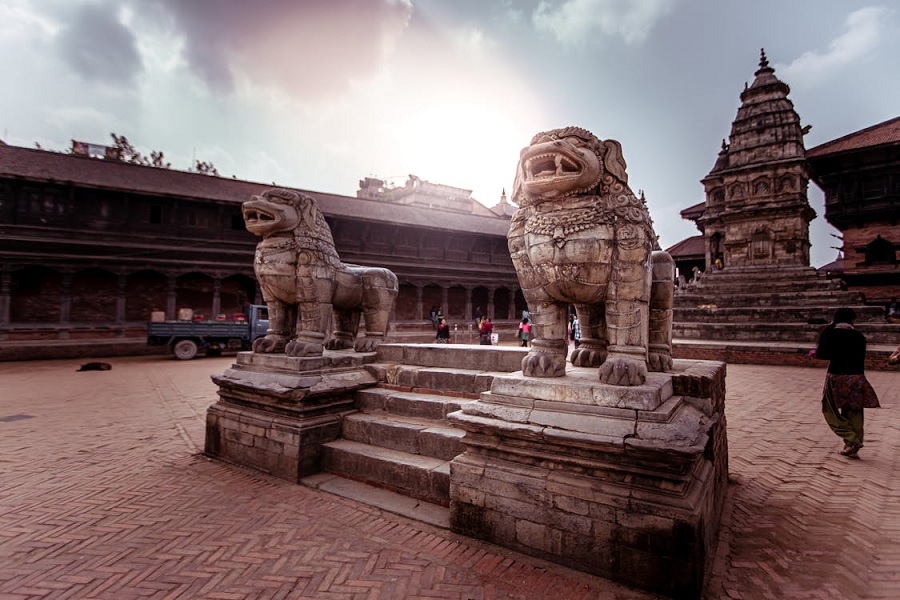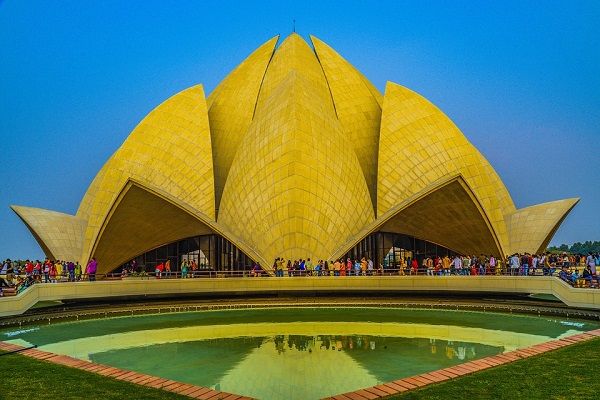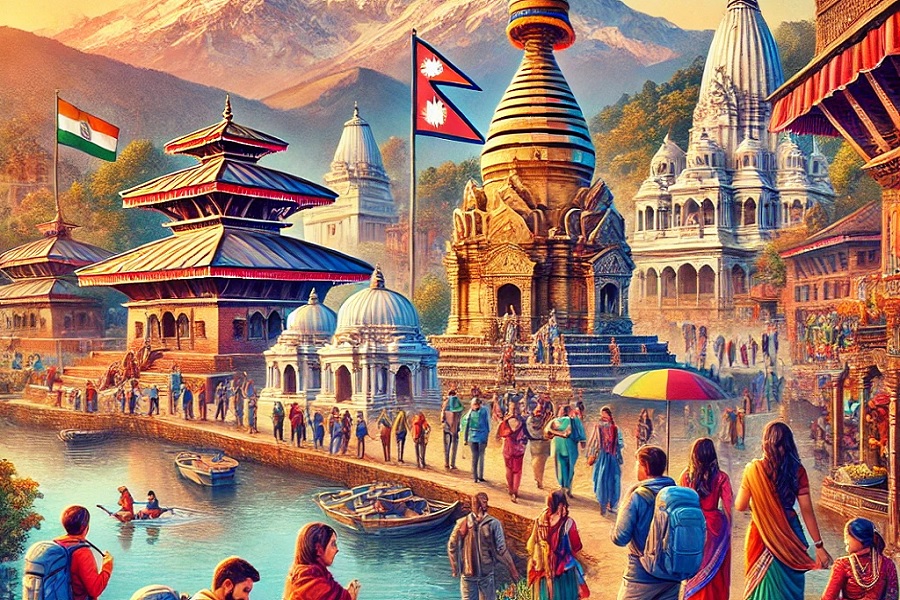Historical Landmarks in India: A Journey Through Time

India is a land of rich culture, history, and heritage, and its historical landmarks reflect this diversity and grandeur. From ancient forts to majestic temples, the country's landmarks are a testament to its glorious past and the enduring legacy of its civilizations. Here’s a journey through time as we explore some of India’s most iconic historical landmarks.
1. Taj Mahal – The Symbol of Eternal Love
Located in Agra, the Taj Mahal is one of the most iconic landmarks in India and a UNESCO World Heritage site. Built by Emperor Shah Jahan in memory of his beloved wife Mumtaz Mahal, the white marble mausoleum is a breathtaking example of Mughal architecture. The Taj Mahal stands as a symbol of love, featuring intricate carvings, lush gardens, and a stunning reflection pool. It draws millions of tourists each year and is considered one of the Seven Wonders of the World.
2. Qutub Minar – The Tower of Victory
Situated in Delhi, the Qutub Minar is a towering example of Indo-Islamic Afghan architecture. Standing at 73 meters, it is the tallest brick minaret in the world. Built by Qutb-ud-din Aibak in 1193, the Qutub Minar marks the beginning of Muslim rule in India. The intricate carvings and inscriptions in Arabic on the tower’s surface are an exquisite example of the era’s artistic finesse. Visitors can also explore the nearby Quwwat-ul-Islam mosque, one of the oldest in India.
3. Red Fort – A Glimpse into Mughal Grandeur
The Red Fort, also known as Lal Qila, is another remarkable landmark in Delhi. Built by Emperor Shah Jahan, this fortress served as the main residence of Mughal emperors for over 200 years. Its massive walls, beautiful gates, and expansive courtyards showcase the opulence of the Mughal dynasty. The fort houses several structures, including the Diwan-i-Aam (Hall of Public Audience) and the Diwan-i-Khas (Hall of Private Audience). The Red Fort is a UNESCO World Heritage site and holds great historical significance, having witnessed many important events, including India's struggle for independence.
4. Gateway of India – A Symbol of Mumbai’s History
The Gateway of India is an iconic landmark located in Mumbai. Built to commemorate the visit of King George V and Queen Mary to India in 1911, this majestic archway was constructed in the Indo-Saracenic style. Made of yellow basalt, it stands at 26 meters and overlooks the Arabian Sea. The Gateway of India became even more historically significant when the last British troops left India through this gateway in 1948, marking the end of British rule in India.
5. Jaipur’s Amer Fort – A Majestic Hilltop Fort
Amer Fort, located in Jaipur, Rajasthan, is a stunning example of Rajput architecture. The fort, perched on a hill, was built by Raja Man Singh in the 16th century. Its grand architecture, with expansive courtyards, elaborate palaces, and intricately designed halls, reflects the rich cultural heritage of the Rajputs. The Sheesh Mahal (Palace of Mirrors) is one of the most popular attractions within the fort. Visitors can enjoy a scenic elephant ride to the top of the fort, making it a memorable experience.
6. Khajuraho Temples – Architectural Marvels
The UNESCO-listed Khajuraho Group of Monuments in Madhya Pradesh is famous for its intricately carved temples and erotic sculptures. Built between 950 and 1050 AD by the Chandela rulers, these temples are a remarkable display of Indian architecture, with each temple offering a unique design and artistic detailing. The carvings depict various aspects of life, including music, dance, and mythology, making them a significant part of India’s cultural heritage.
7. Hampi – The Ancient Vijayanagara Empire
Hampi, a UNESCO World Heritage site in Karnataka, was once the capital of the Vijayanagara Empire in the 14th century. The ruins of Hampi are spread across a vast area, showcasing stunning temples, palaces, and ancient structures. The Virupaksha Temple, the Stone Chariot, and the Lotus Mahal are some of the key attractions that reflect the grandeur and architectural prowess of the Vijayanagara Empire. Hampi is also famous for its boulder-strewn landscape, making it a popular destination for both history lovers and adventure seekers.
8. Fatehpur Sikri – The Abandoned Mughal City
Fatehpur Sikri, located near Agra, is a UNESCO World Heritage site and was once the capital of the Mughal Empire under Emperor Akbar. Built in the late 16th century, the city showcases a blend of Persian, Hindu, and Mughal architectural styles. Key attractions include the Buland Darwaza, Jama Masjid, and the tomb of Salim Chishti. However, the city was abandoned after just 14 years due to water shortages, adding an air of mystery to its ruins.
9. Ajanta and Ellora Caves – The Ancient Buddhist Rock-Cut Temples
The Ajanta and Ellora Caves in Maharashtra are among the most important rock-cut monuments in India. The Ajanta caves are known for their ancient Buddhist paintings and sculptures that date back to the 2nd century BCE. The Ellora caves, on the other hand, are a mix of Buddhist, Hindu, and Jain temples carved into the cliffs. The Kailasa Temple in Ellora is one of the largest monolithic structures in the world and a masterpiece of Indian architecture.
10. Nalanda University – A Beacon of Ancient Learning
Nalanda University, located in Bihar, was one of the oldest residential universities in the world. Founded in the 5th century AD, it attracted scholars from all over the world and was a major center of learning in ancient India. Though the university is now in ruins, the remnants of its grand libraries, temples, and lecture halls still stand as a symbol of India’s rich educational heritage.
























